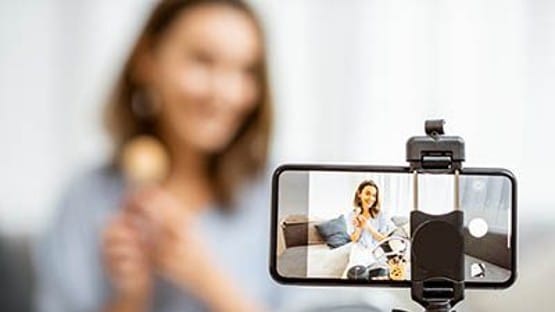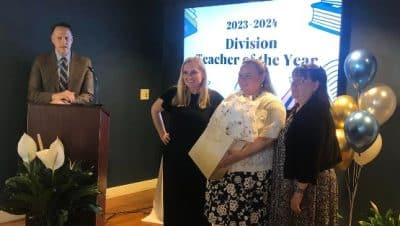
Because, if Hunter isn’t injured, he bolts for the NBA last year, no matter how far into the tournament the ‘Hoos had gone.
We can be … 98 percent certain on that. Maybe more.
The question is: does UVA win the natty in 2018?
The answer to that one: no.
Hunter, for starters, wasn’t the Hunter in 2017-2018 that he became in 2018-2019. He was the ACC Sixth Man of the Year as a redshirt freshman, but that’s because he couldn’t crack the starting lineup, averaging 19.9 minutes per game off the bench, though his minutes ratcheted up as the ACC season went on.
The 2017-2018 Hunter shot 38.2 percent from three, 46.0 percent on two-point jumpers, and 60.6 percent on shots at the rim, and shots at the rim comprised 33.3 percent of his shots, per Hoop-Math.com.
The 2018-2019 Hunter: 32.5 minutes per game, 43.8 percent shooting from three, 42.8 percent on two-point jumpers, and 68.6 percent on shots at the rim, with 34.8 percent of his shots being the at-the-rim kind.
His effective field goal percentage went up accordingly, to 57.9 percent, from 53.8 percent.
This happened with Hunter actually registering a slightly lower usage rate: 23.5 percent in 2018-2019, from 25.4 percent in 2017-2018.
You basically got a good bit more from Hunter with a lower usage rate, and that’s not accounting, at all, for him being the ACC and national defensive player of the year.
Hunter, circa 2019, was a hybrid of Malcolm Brogdon from 2016 and Isaiah Wilkins from 2018.
Hunter, circa 2018, was, essentially, Marial Shayok, the UVA version (8.9 ppg, 44.5% FG, 32.8% from three, at UVA in 2016-2017), not the Iowa State version (18.7 ppg, 49.6% FG, 38.6% from three in 2018-2019).
So, you don’t have Big Game Hunter in the 2018 NCAA Tournament.
Nor do you have the NBA version of Ty Jerome.
Jerome went to the CP3 elite guard camp in the summer a boy, and came back The Man. He wasn’t an NBA talent when he left, and he came back with first-round-pick buzz.
And then, in 2018-2019, he lived up to it.
He got in the lane more: his percentage of shots at the rim going up from 15.5 percent in 2017-2018 to 18.8 percent in 2018-2019, which seems marginal, but then you look at his ratio of free throw attempts to field goal attempts, you see a huge jump, from 13.3 percent in 2017-2018 to 22.2 percent in 2018-2019.
Also up: the percentage of his shots at the rim that were unassisted (93.8 percent in 2018-2019; 80.8 percent in 2017-2018).
Also up, way up: his assists, from 3.9 per game in 2017-2018 to 5.5 per game in 2018-2019.
Which all suggests: Jerome was a much more effective creator, for himself and for his teammates.
So, you had a much better Hunter, you had a better Jerome.
You also had a better Kyle Guy.
Specifically, you had a more efficient Guy, who was first-team All-ACC in both 2017-2018 and 2018-2019.
His shooting numbers were better: his field goal percentage up from 41.5 to 44.9, his three-point percentage up from 39.2 to 42.6.
He also got into the lane better, or, again, more efficiently: 20.0 percent of his attempts in 2017-2018 were at the rim, but he only shot 50 percent on those shots; in 2018-2019, 15.0 percent of his shots were at the rim, but he made 66.7 percent of those shots.
His free throw to field goal ratio was also up, way up: from 11.9 percent in 2017-2018 to 19.0 percent in 2018-2019.
His effective field goal percentage soared as a result: from 51.2 percent in 2017-2018 to a team-best 58.5 percent in 2018-2019.
Boiling it down, you had a fully developed Big Three, and all three at the height of their powers, in 2018-2019. In 2017-2018, you had a slightly less effective Guy, a Jerome who was a good college point guard, and that was it, and a Hunter who was a good sixth man.
That 2017-2018 UVA team, at full strength in the NCAA Tournament, gets to the Sweet Sixteen, maybe the Elite Eight, but that team had gone 31-2 on its way to the #1 overall national seed in the NCAA Tournament in spite of what it lacked, namely, a go-to guy.
The 2018-2019 ‘Hoos had three go-to guys, which is why we all argue amongst ourselves as to who should be considered the MVP of the whole effort.
(My vote: Hunter was clearly the MVP of the championship game, I agree with Guy being MOP of the Final Four, and I submit that Jerome would have been Tournament MVP, should such an award exist.)
None of this happens if Hunter is healthy for the UMBC game, UVA wins that one by 20, and goes however far it goes in the 2018 NCAA Tournament, because he’s gone after that.
We probably still have Jerome and Guy back for their senior seasons, but … no national championship hat that I still haven’t sweated in.
I love that hat.
Column by Chris Graham










